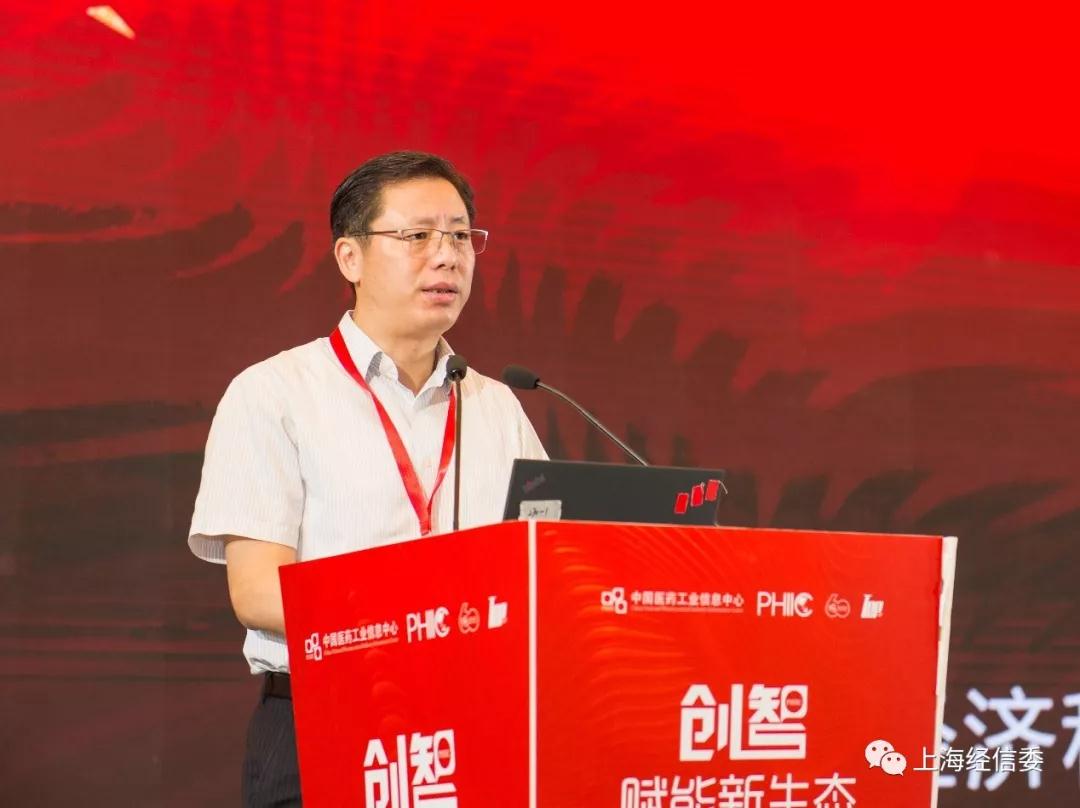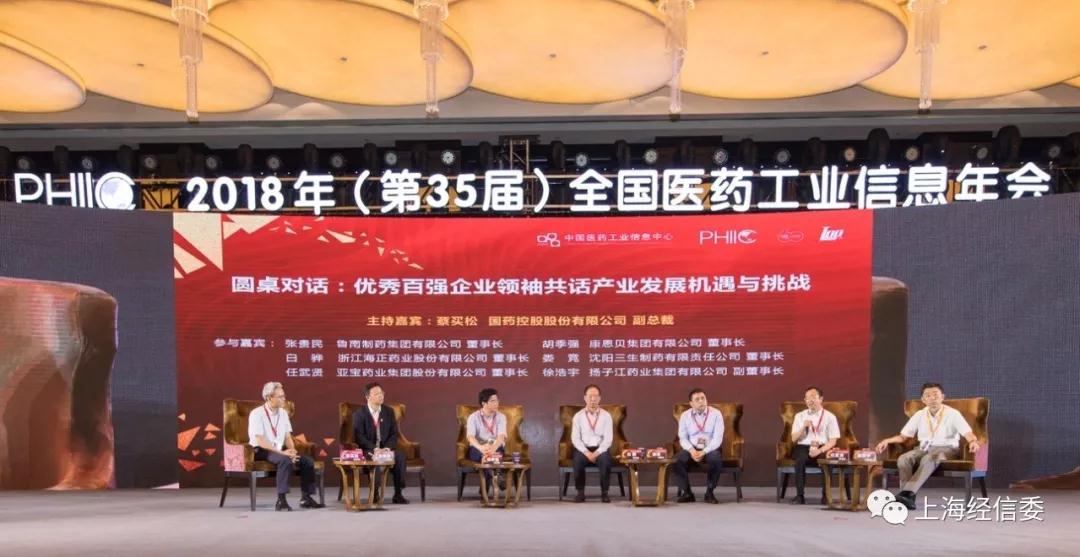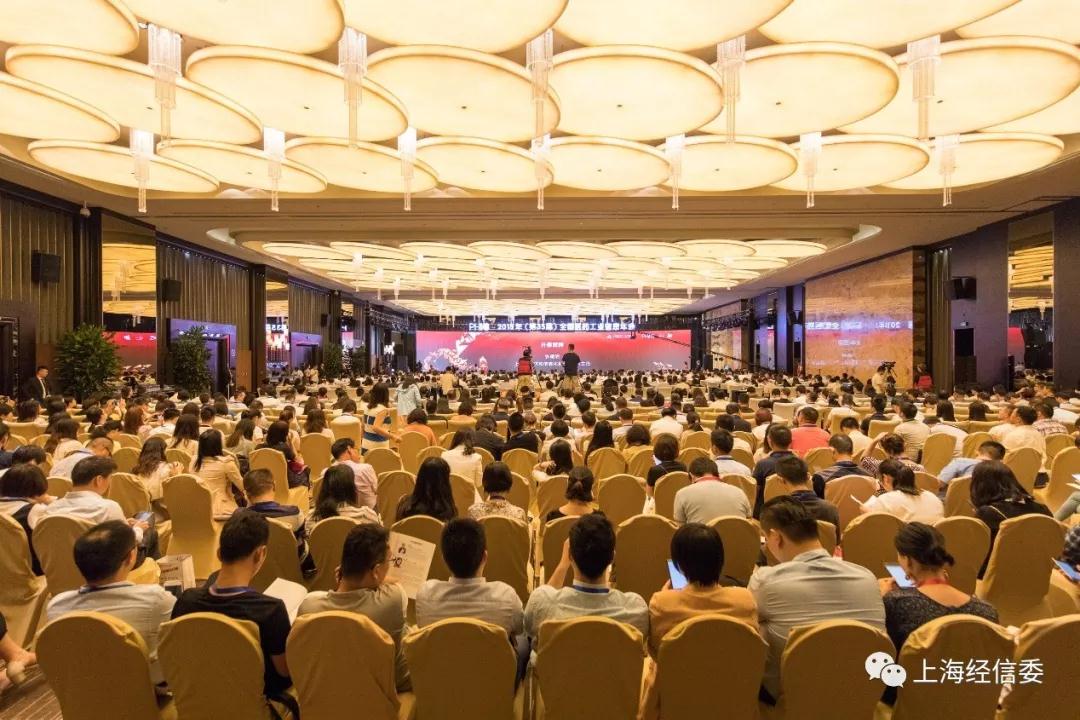On August 4th, the 35th China Pharmaceutical Industry Information Annual Conference 2018 was held in Shanghai. Qu Fenghong, Vice chairman and Secretary General of the Central Committee of Chinese Peasants and Workers Democratic Party, Sun Xianze, Director of Chinese Pharmaceutical Association, Cao Xuejun, Deputy Director of Consumer Goods Division of the Ministry of Industry and Information Technology of the People's Republic of China (MIIT), Zhang Jinaming, Vice Chairman of Shanghai Municipal Commission of Economy and Informatization, and Wu Bin, Vice Governor of Minhang District were present and made speeches.

Mr. Zhang pointed out that the pharmaceutical industry is an important industry related to the national economy and people's livelihood. Shanghai owns rich medical research resources, abundant innovation ability and profound industrial foundation. The pharmaceutical industry is one of the six key industries in the city. What's more, biomedicine is also one of the strategic emerging industries. Zhang Jiang Medicine Valley has become an important source of new drug research and development, as well as a bright image for Shanghai industrial innovation and development. More than 40 multinational R&D centers and 50 state or municipal scientific research institutes have gathered here. For a long time, Shanghai has attached great importance to the development of the pharmaceutical industry. Last year, the total economic volume of the bio pharmaceutical industry of Shanghai was RMB302 billion, an increase of 9.4% over the previous year. The manufacturing industry reachedRMB106.7 billion, an increase of 11.3%; the total sales of the pharmaceutical business was RMB171.8 billion, an increase of 4.2%; and the bio pharmaceutical R&D service outsourcing wasRMB23.5 billion and increased by 5.5%.
Shanghai also attaches great importance to planning guidance and policies. According to the issued plan for pharmaceutical industry, by 2020, the main business income of the bio pharmaceutical industry in the city should have been more than 380 billion yuan. The center of high-end products R & D, manufacturing center, outsourcing center and global modern drug circulation system in the Asia Pacific Region should have been completed. Shanghai will speed up the development of the international leading biological pharmaceutical industry cluster. With the implementation of national strategy and policy, the development of the pharmaceutical industry in Shanghai will bring new opportunities for the national and global pharmaceutical industry.

In addition to Top 100 of China pharmaceutical industry in 2017, some other lists were also published, including the list of the best industrial enterprises of China pharmaceutical R & D product line in 2018, the most valuable enterprises (unlisted) of China pharmaceutical industry in 2018 and the list of the most powerful enterprises in China pharmaceutical industry in 2018.In 2017, Top 100 enterprises broke through the 750 billion key points with a growth of 10.2% of the main business income. Although the growth rate fell by 0.9 percentage points from the same period of the previous year, the growth trend was still basically stable. The threshold of the top 100 list rose from RMB2.44 billion last year to RMB2.56 billion, a slight increase of 5%.The main business income of 21 enterprises has broken through the scale of ten billion, increasing two from last year, and the number of large scale enterprises has increased steadily. With the leading role of top 100 enterprises, the pharmaceutical industry is gradually moving towards scale economy.

Relevant units and enterprises were present, including economic and information departments of different provinces, autonomous regions and municipalities, pharmaceutical industry associations, medical insurance units, medical institutions and their supporting enterprises.







